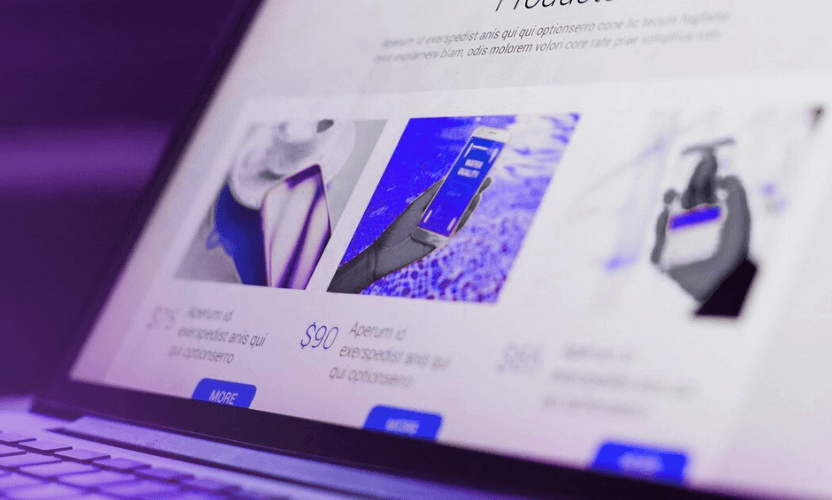Etsy is known for selling handmade items created by a variety of designers, makers, and artists. These products are often one-of-a-kind, unfortunately, making them an easy target for infringers looking for ideas to steal and copy. But don’t worry. If you find yourself the victim of intellectual property infringement (IP) on Etsy, there is a simple process to report and remove copycat listings.
Etsy’s intellectual property policy provides more information on how they address infringement allegations and how IP owners, or representatives, can submit notices of infringement. We have outlined the exact steps that you should take to alert Etsy and protect your intellectual property rights. But first, let’s take a closer look at intellectual property itself.
What is Intellectual Property?
Intellectual property (IP) refers to creations of the mind, such as inventions, literary and artistic works, symbols, names, images, and designs used in commerce. IP is protected by law through patents, copyrights, trademarks, and trade secrets. These protections give creators exclusive rights to their creations for a certain period of time. Some types of IP infringement include:
Copyright Infringement: Breaking copyright laws involves using copyrighted material such as images, books, sound recordings, movies, or software without the permission of the copyright owner. Infringement of copyright can include reproducing, distributing, performing, or displaying the copyrighted work without authorisation.
Trademark Infringement: This occurs when someone uses a registered trademark such as a logo, symbol, or name without permission from the trademark owner. This can lead to confusion among consumers and harm the reputation of the original brand.
Patent Infringement: Patent infringement occurs when someone uses, makes, sells or imports a patented invention without the permission of the patent owner. There are several different types of patent infringement that can occur:
- Direct infringement: Direct infringement is a primary infringement which occurs when someone directly uses, makes, sells or imports a patented invention without authorisation from the patent holder.
- Indirect infringement: Indirect infringement can take two forms – induced infringement and contributory infringement. Induced infringement occurs when someone encourages or induces another party to infringe a patent. Contributory infringement is a form of secondary infringement that occurs when someone provides a component or material that is essential to the patented invention and knows, or should know, that it will be used to infringe the patent.
- Wilful infringement: This is a deliberate infringement, when someone knowingly and intentionally infringes a patent, despite knowing that the invention is patented. This can result in higher damages being awarded to the patent holder in a lawsuit.
Trade Secret Infringement: This occurs when someone improperly acquires or discloses a trade secret, such as confidential business information or formulas, without authorisation from the owner. This can result in an unfair competitive advantage being gained in the marketplace.

Submitting a Notice of Infringement to Etsy
On their website, Etsy provides a Reporting Form where you can make a notice of claimed infringement under the DMCA (Digital Millennium Copyright Act) designated agent. This form is the fastest way to report an IP issue to Etsy. But be prepared, Etsy may request additional information from you before processing the notice. This may include identity verification of the reporting party or further documentation regarding the owned intellectual property.
Step 1: Who are you?
Once you have opened the reporting form, you will be presented with the following statement – choose which option applies to you.
You allege that content on Etsy violates intellectual property that:
- you own the rights to;
- a third party, company or organization owns the rights to;
- a company or organization that you represent owns the rights to;
- none of the above
You can only continue with the IP infringement report if you are the rights owner or if you are an authorised representative of that company.
Step 2: Your details
Once you have chosen your relationship to the IP, you can then begin to fill out the form.
Provide the following information:
- Intellectual Property Owner – usually the brand that is being infringed
- Your Name and Title
- Your Company
- Your Address
- An Email Address that Etsy will contact you on – make sure that you are happy for this to be given to the infringing seller
- Your Phone Number
Step 3: The Intellectual Property
Select the type of IP right that is being infringed – you can find more information about the different types of rights here. Fill in who the IP owner is – this will either be your full name or the name of the organisation that you are authorised to represent.
At this point the questions will differ depending on which infringing IP right you chose.
If you selected Copyright, fill in the name or title of the copyrighted work, and select which type of work it closely resembles (e.g. design, video, image). Find anywhere that your work can be found online and include this in the form. This could be anything from your Instagram to your website. The best URLs will have a date to easily prove that you are the original creator of the work. If your work appears nowhere online, try and describe it in as much detail as you can. If the Copyright is registered, make sure to include the territories in which it is registered and its registration number.
If you selected Trademark, Counterfeit goods or Patent, the first question will ask you ‘What is the Trademark/Patent?’ – here you should include the word or name that the Trademark/Patent protects. If your trademark/patent is registered, select yes, and then add in the registration number and the territories it protects. For Trademarks, you should also include the classes it protects. This information can all be found on your IP certification. If your Trademark or Patent is not registered or is pending, you can try to use this form to remove fakes but it has a high likelihood of being rejected. If this is the case, get in touch and we can see if we can help.
Step 4: The Infringing Products or Listings
At this stage, you will be asked to provide all of the listings that you believe are infringing your intellectual property. There is the option to add these one at a time if you only have a few or to add multiple. All of the infringing products should appear in boxes on the page.
Step 5: Submit and Wait
Once you have popped in your URLs you will be asked to sign a declaration of good faith. Your electronic signature may be provided to the infringing seller.
After this, you simply have to hit submit and wait for Etsy to take action.
What steps does Etsy take?
Following submitting your infringement form, Etsy is quick to remove or disable access to the allegedly infringing materials. However, Etsy makes a reasonable attempt to contact the affected persons, provide them with information about the notice and removal. In cases of alleged copyright infringement, Etsy provides information about how to submit a counter-notice. It is also possible that Etsy may give the affected member a copy of the infringement notice, including the name and email address of the reporting party
If this feels overwhelming to you, don’t worry – we can help. Our team of experienced and friendly brand protection experts is on hand to seamlessly defend and protect your brand online.
FAQs
One of the main reasons why IP rights are important is that they help to encourage innovation and creativity. By giving creators the exclusive rights to their creations, IP rights incentivise them to continue developing new ideas and products. This ultimately leads to economic growth and progress in various industries.
IP protection helps to protect the reputation and integrity of brands. Trademarks, for example, allow businesses to distinguish their products or services from competitors, building trust and loyalty among consumers. Without IP rights, legitimate businesses would be vulnerable to copycats and counterfeiters, who could gain an unfair advantage and ultimately damage a brand’s reputation and revenue.
Additionally, IP rights can also help creators and innovators monetise their creations. By having exclusive rights to their work, they can license or sell their intellectual property to others, or enter into a partnership agreement which generates income and supports further innovation.
Intellectual property infringement can have serious consequences for individuals and businesses alike. When someone uses another person’s intellectual property without permission, they are violating the owner’s rights and potentially damaging their reputation and bottom line.
One of the primary consequences of intellectual property infringement is legal action. The owner of the infringed intellectual property can seek legal advice and potentially action against the perpetrator, seeking damages for lost profits, statutory damages, and attorney’s fees. An intellectual property dispute can result in the infringer facing criminal charges, especially in cases of counterfeiting or piracy.
In addition to legal consequences, intellectual property infringement can also result in reputational damage. Businesses that are found to be infringing on someone else’s IP rights may face backlash from consumers and damage to their brand reputation. This can lead to a loss of trust and credibility in the marketplace, which can have long-term impacts on their success.
Furthermore, intellectual property infringement can stifle innovation and creativity. When creators and innovators see their work being copied or stolen, and suffering financial losses as a result, they may be less motivated to continue developing new ideas. This can ultimately harm industries that rely on innovation to drive growth and progress.
Checking if a product is infringing on any intellectual property (IP) right is crucial for businesses to avoid legal issues and protect their own creations. There are several steps that can be taken to determine whether a product may be infringing on someone else’s IP rights.
One of the first things to do is conduct a thorough search of existing patents, trademarks, copyrights, and design rights that may be relevant to the product in question. This can be done through online databases or with the help of a professional IP attorney.
Another important step is to compare the product in question with any existing IP rights. Look for similarities in design, branding, or functionality that could potentially infringe on someone else’s rights. It may also be helpful to consider whether the product falls within the same industry or market as the existing IP rights.
If there are any concerns about potential infringement, it is advisable to reach out to the owner of the existing IP rights for clarification or permission. This can help avoid any legal disputes down the line and potentially lead to a licensing agreement if necessary.
In some cases, it may be helpful to conduct a freedom-to-operate analysis, which involves reviewing all relevant IP rights and determining whether there is any potential infringement. This analysis can help businesses understand the risks and potential legal consequences of launching a new product or service.




